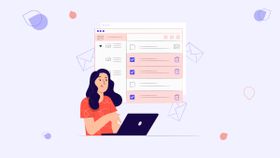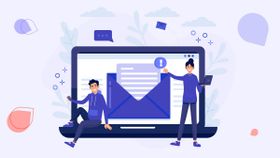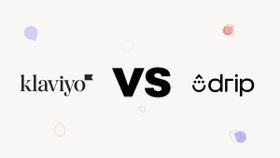Email Marketing Hacks: 10 Insider Strategies for Maximum Impact
By implementing these strategies, you can achieve higher open rates, increased engagement, and, ultimately, more conversions.
Updated April 4, 2024.

As a marketing pro, you know email is vital to your overall strategy. But keeping your emails relevant and compelling? That’s tougher. Open rates lag, and clicks stall.
So we’ve put together 10 hacks backed by expert insights to supercharge your email marketing. This guide will help you boost engagement and get more from your campaigns.
1. Leverage AI for content creation
Integrate AI tools like ChatGPT and Google Bard to enhance your email marketing campaigns. You can use specific prompts to create innovative subject lines, craft compelling CTAs, discover personalized product recommendations, and determine the best times for sending emails.
HubSpot's State of Generative AI report highlights that 95% of marketers using AI for email creation rate it as effective. While AI lays the groundwork, remember that your creative flair truly personalizes and elevates the content.
Here are some examples of ChatGPT in action, using specific prompts
Prompt #1: Personalized product recommendations
Prompt #2: Storytelling for brand engagement
» Here's how to know if ChatGPT wrote your email.
2. Segment your audience
You can significantly improve your email marketing by creating different segments within your email list. You can use data and specific tools to analyze behaviors, preferences, and past interactions to tailor messages to meet each segment's needs and interests.
Klaviyo's email marketing capabilities can help segment your email list to the smallest details. Drip also offers great features for detailed email segmentation. Let's take a look at some segmentation strategies.
» Check out our Drip vs Klaviyo comparison to find the best platform for you.
Geographic location
Customize your email campaigns by segmenting your customers based on their location, such as continent, country, or state. This lets you align your content with local trends, weather patterns, and cultural norms. For example, you can target North American customers with products suited to their climate.
Purchase history
This strategy tailors your emails to different customer groups, such as first-time, occasional, or frequent buyers, and offers them content that resonates with their needs.
Here are a few more ways of segmenting based on purchase history:
- Sort customers into groups like new, returning, or VIP: Provide first-timers with introductory deals, offer discounts to returning customers, and grant exclusive benefits to VIPs.
- Group customers based on their purchased products: This helps you send updates and offers for similar items, accessories, or complementary products.
- Segment customers by their spending levels: Use low, medium, or high-spender groups. Customize offers to match their spending behavior, such as bulk buying deals for high spenders or value deals for low spenders.
- Distinguish between regular and occasional buyers. Regular buyers may prefer loyalty programs, while seasonal offers or flash sales could entice occasional ones.
Engagement levels
Another aspect of your emails that you can use to segment your audience is their level of engagement. Metrics like open rates, click-through rates, subscribe rates, and conversion rates reveal what interests your audience and which campaigns work best. Start segmenting customers based on open rates to improve your email revenue to get better results.
Here's how:
- Highly engaged subscribers: These subscribers regularly open and engage with your emails. Show your appreciation by sending them thank-you messages.
- Moderately engaged subscribers: Re-engage those who open your emails with compelling subject lines.
- Low-engagement subscribers: To win back subscribers with low engagement, craft intriguing emails that stand out in their inboxes and consider offering a discount.
- Abandoned cart: Send gentle reminders to first-time abandoners, time-limited discounts to occasional abandoners, and investigate reasons for frequent abandonment with surveys in exchange for coupons.
» Try these 13 engagement tips to get people opening and clicking your emails.
3. Personalize beyond the subject line
Personalization has become a buzzword, but expert email marketers know how to personalize each email subscriber's experience with your brand. According to Twillio Segment's report, 60% of consumers will likely become repeat buyers when they enjoy personalized shopping experiences.
Enhance email personalization by customizing the entire email, not just the subject line. Tailor the content to the recipient's interests or past interactions for a more engaging experience.
For example, if a customer recently purchased a cutting board from your store, there's a good chance they'd be interested in complementary grilling products. You can suggest stainless steel tongs and a BBQ grill brush to enhance their grilling experience. All it takes is a gentle reminder to encourage them to explore these related products.
» Speak directly to customers at scale with our ultimate guide to personalization.
4. Implement strategic automation
Another great tactic you should use is to automate your campaigns. This is done through email marketing flows (or journeys), and it will help you improve your revenue and save time. This makes streamlining communication more efficient and adds a personalized touch to your content.
Here are some examples of automated email flows you should try:
Welcome Series
Invesp reports that welcome emails have an average 50% open rate and are 86% more effective than regular marketing newsletters. With a tool like Drip, you can send emails to introduce your brand, share customer testimonials, and offer a special discount code as a welcome gift.
Post-Purchase Sequence
Post-purchase emails are sent after purchase and serve various purposes, such as sharing order and shipping details or providing promotions and educational content to boost loyalty and encourage future purchases.
You can add a thank-you message or ask for a review. The time you send them depends on when your customer bought the product. It's best to confirm the order right away, but for review requests, wait until the product is delivered and your customer has used it.
Re-engagement Campaigns
According to Zero Bounce, marketers lose around 23% of their email list annually. Some people will unsubscribe or stop opening emails, even if they don't officially leave your list. To re-engage inactive subscribers, send special offers or engaging content through targeted win-back emails.
Pro tip: Not sure which email flows you should launch next? Conduct an email audit.
5. Opt for plain text emails
While visually rich emails have their place, plain text emails can be surprisingly effective. They often evade spam filters more successfully and give the impression of a personal, one-to-one conversation. A well-written, plain-text email stands out amid graphic-heavy messages, delivering a refreshingly direct and authentic communication style.
6. Craft compelling subject lines
Subject lines in email marketing set the tone and determine if the recipient will engage. According to HubSpot Research, 65% of marketers believe subject lines significantly impact open rates.
Consider these best practices for when you create your next subject line:
- Grab attention: Craft a subject line like "Exclusive Offer Inside: Don't Miss Out!" to pique curiosity and entice readers to open your email.
- Be concise: Use a short subject line like "Last Chance: 50% Off Today!" for a clear and effective message.
- Avoid spam triggers: Avoid spammy words like "free" or excessive punctuation, such as "Grab Your Prize!!!" to ensure your email reaches the inbox.
- A/B testing: Experiment with subject lines by adding urgency with "Limited Time Offer" or an emoji. Split-test your subject lines to discover what resonates best with your audience.
- Relevance: Ensure your email subject line aligns with your email content, like "Your Recent Purchase: What You Need to Know," to maintain trust and prevent unsubscribes.
7. Encourage and facilitate conversations
Encourage your audience to ask questions, provide feedback, or share their thoughts. But make sure that a real team member is available to engage in meaningful dialogue. This builds trust and provides valuable insights into your audience's preferences and concerns.
When your audience feels they can talk to you, they'll likely stay loyal to your brand. You can also collect customer feedback through surveys, helping you better understand and enhance the customer experience.
8. Use storytelling to connect
In a survey by Edelman, 80% of consumers said they wanted brands to tell stories as part of their marketing efforts. Incorporate storytelling into your emails to forge a deeper connection with your audience.
Share customer success stories as social proof, highlight how your products have solved problems, or share behind-the-scenes glimpses of your brand. Storytelling humanizes your brand, making your messages more relatable and memorable.
9. Test and adapt
Keep your email campaigns fresh and engaging by constantly trying out new approaches. Whether testing different subject lines or experimenting with various email formats, A/B testing is your secret weapon for getting to know your audience better. This ongoing process allows you to fine-tune your email marketing strategy for optimal results.
You can test a subject line like "Don't Miss Out on Our Exclusive Offer!" against "Last Chance to Grab Your Deal!" to see which resonates more with your subscribers. Experiment with email layouts, and try out a concise and image-heavy format in one campaign and a text-heavy, informative style in another.
Make sure to have all the proper analytics and link tracking in place to get the data you need.
» Hire a vetted A/B specialist to boost your email campaigns.
10. Optimize for mobile
Mobile optimization isn't just about scaling down content. It's about ensuring that text size, button placement, and user experience on smaller screens are smooth and user-friendly. Implementing a mobile-responsive email design can significantly boost unique mobile clicks, potentially increasing them by as much as 15%.
Here are some tips to ensure your emails are mobile-friendly:
- Make your subject lines short and compelling to grab the reader's attention quickly.
- Use a single-column layout for your email content. This makes it easier to read and navigate on mobile screens.
- Increase font size for readability, and use larger buttons that are easy to tap with a finger.
- Avoid pop-ups and consider using alternative methods for capturing leads or providing information.
- And don't forget to combine your email marketing with SMS campaigns to get maximum traction.
Maximize your email marketing campaigns
These hacks are all about making your emails connect to your audience and inspiring them to take action. Great email marketing is flexible and imaginative, always evolving to match your audience's changing preferences. If you want expert help to make it happen, Mayple can connect you with vetted email marketing consultants to build your next winning campaign.



















